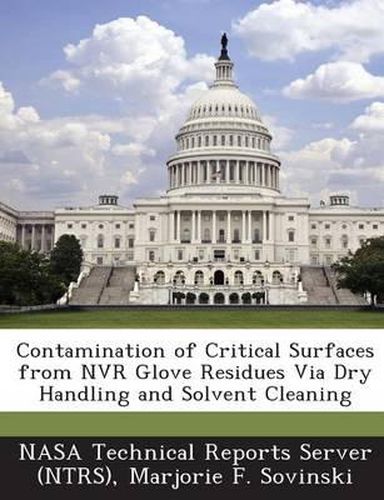Readings Newsletter
Become a Readings Member to make your shopping experience even easier.
Sign in or sign up for free!
You’re not far away from qualifying for FREE standard shipping within Australia
You’ve qualified for FREE standard shipping within Australia
The cart is loading…






Gloves are often used to prevent the contamination of critical surfaces during handling. The type of glove chosen for use should be the glove that produces the least amount of non-volatile residue (NVR). This paper covers the analysis of polyethylene, nitrile, latex, vinyl, and polyurethane gloves using the contact transfer and gravimetric determination methods covered in the NASA GSFC work instruction Gravimetric Determination and Contact Transfer of Non-volatile Residue (NVR) in Cleanroom Glove Samples, 541-WI-5330.1.21 and in the ASTM Standard E-1731M-95, Standard Test Method for Gravimetric Determination of Non-Volatile Residue from Cleanroom Gloves. The tests performed focus on contamination of critical surfaces at the molecular level. The study found that for the most part, all of the gloves performed equally well in the contact transfer testing. However, the polyethylene gloves performed the best in the gravimetric determination testing, and therefore should be used whenever solvent contact is a possibility. The nitrile gloves may be used as a substitute for latex gloves when latex sensitivity is an issue. The use of vinyl gloves should be avoided, especially if solvent contact is a possibility. A glove database will be established by Goddard Space Flight Center (GSFC) Code 541 to compile the results from future testing of new gloves and different glove lots.
$9.00 standard shipping within Australia
FREE standard shipping within Australia for orders over $100.00
Express & International shipping calculated at checkout
Gloves are often used to prevent the contamination of critical surfaces during handling. The type of glove chosen for use should be the glove that produces the least amount of non-volatile residue (NVR). This paper covers the analysis of polyethylene, nitrile, latex, vinyl, and polyurethane gloves using the contact transfer and gravimetric determination methods covered in the NASA GSFC work instruction Gravimetric Determination and Contact Transfer of Non-volatile Residue (NVR) in Cleanroom Glove Samples, 541-WI-5330.1.21 and in the ASTM Standard E-1731M-95, Standard Test Method for Gravimetric Determination of Non-Volatile Residue from Cleanroom Gloves. The tests performed focus on contamination of critical surfaces at the molecular level. The study found that for the most part, all of the gloves performed equally well in the contact transfer testing. However, the polyethylene gloves performed the best in the gravimetric determination testing, and therefore should be used whenever solvent contact is a possibility. The nitrile gloves may be used as a substitute for latex gloves when latex sensitivity is an issue. The use of vinyl gloves should be avoided, especially if solvent contact is a possibility. A glove database will be established by Goddard Space Flight Center (GSFC) Code 541 to compile the results from future testing of new gloves and different glove lots.